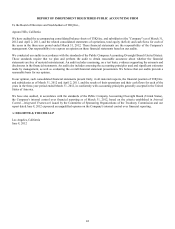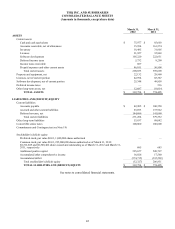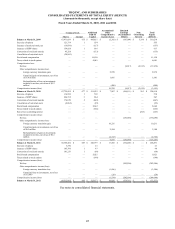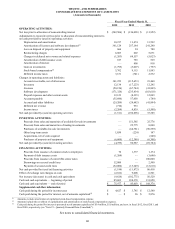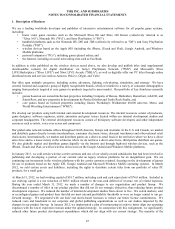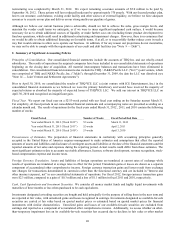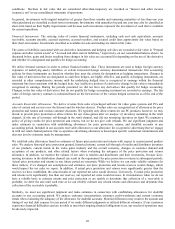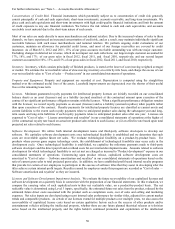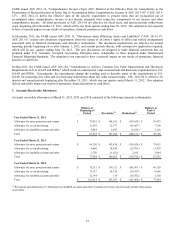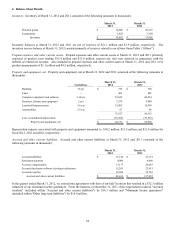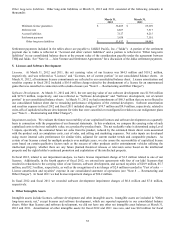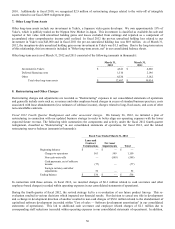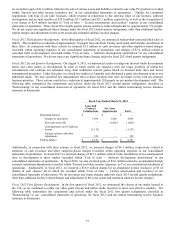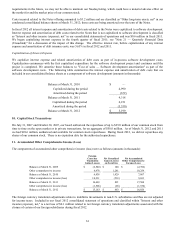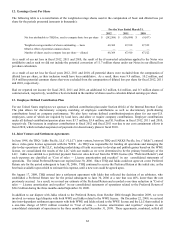THQ 2012 Annual Report Download - page 60
Download and view the complete annual report
Please find page 60 of the 2012 THQ annual report below. You can navigate through the pages in the report by either clicking on the pages listed below, or by using the keyword search tool below to find specific information within the annual report.52
they are recognized as a reduction of net sales. Advertising costs, included in "Selling and marketing" expense in our
consolidated statements of operations, for fiscal 2012, 2011 and 2010 are $105.6 million, $78.0 million, and $69.7 million,
respectively.
Other Intangible Assets. Intangible assets include licenses, software development and other intangible assets. Intangible assets
are included in "Other long-term assets, net," except licenses and software development, which are reported separately in our
consolidated balance sheets. Other than licenses and software development, we did not have any other net intangible asset
balances at March 31, 2012 and 2011. As of March 31, 2010 all identifiable intangible assets, other than licenses and software
development, were fully amortized. Finite-lived other intangible assets were amortized using the straight-line method over the
lesser of their estimated useful lives or the agreement terms, typically from one and one-half to ten years and were assessed for
impairment whenever events or changes in circumstances indicated that their carrying amount may not have been recoverable.
Stock-based compensation. We estimate the fair value of stock options and our employee stock purchase plan on the date of
grant using the Black-Scholes option pricing model which requires the input of subjective assumptions, including the expected
volatility of our common stock and an option's expected life. The fair value of our restricted stock and restricted stock units is
determined based on the closing trading price of our common stock on the grant date. The amount of expense recognized
represents the expense associated with the stock-based awards we expect to ultimately vest based upon an estimated rate of
forfeitures. Our estimate of forfeitures is based on historical forfeiture behavior as well as any expected trends in future
forfeiture behavior; this rate of forfeitures is updated as necessary and any adjustments needed to recognize the fair value of
options that actually vest or are forfeited are recorded. The fair value for awards that are expected to vest is then amortized on a
straight-line basis over the requisite service period of the award, which is generally the option vesting term. As a result, the
financial statements include amounts that are based upon our best estimates and judgments relating to the expenses recognized
for stock-based compensation.
Capitalization of interest expense. We capitalize interest expense related to in-process software development costs.
Capitalization commences with the first capitalized expenditure for the software development project and continues until the
project is completed. We amortize capitalized interest to "Cost of sales — Software amortization and royalties" as part of the
software development costs; see "Note 9 — Debt." We began capitalizing interest expense in the fourth quarter of fiscal 2011;
see "Note 21 — Quarterly Financial Data (Unaudited)" for a discussion of the impact of this change.
Income Taxes. The provision for income taxes is computed using the asset and liability method, under which deferred tax
assets and liabilities are recognized based on their expected future tax carrying value. Deferred tax assets and liabilities are
measured using the enacted tax rates expected to apply to taxable income in effect for the years in which those tax assets are
anticipated to be realized or settled. We record a valuation allowance to reduce deferred tax assets to the amount that is believed
more likely than not to be realized.
The calculation of tax liabilities involves judgment, assumptions and estimates in evaluating the application of authoritative
accounting guidance, enacted tax laws, our interpretation of tax laws and potential outcomes of audits conducted by tax
authorities. Material changes in tax laws, our interpretation of tax laws, or the resolution of tax audits, if and when conducted
by tax authorities, could significantly impact the amount of income tax expense in our consolidated financial statements.
Basic and Diluted Loss Per Share. Basic loss per share is computed as net loss attributable to THQ Inc. divided by the
weighted-average number of shares outstanding for the period. Diluted loss per share reflects the potential dilution that could
occur from common shares issuable through stock-based compensation plans including stock options, stock-based awards,
purchase opportunities under our employee stock purchase plan, and the conversion of our convertible senior notes. On
August 4, 2009, we issued $100.0 million 5% convertible senior notes ("Notes"); see "Note 9 — Debt." Under the provisions
of the if-converted method, the Notes are assumed to have been converted at the beginning of the respective period or at the
time of issuance if later, and are included in the denominator of the diluted calculation. The after-tax interest expense,
amortization of previously capitalized interest expense, and amortization of debt issuance costs in connection with the Notes
are added back to the numerator of the diluted calculation. However, the if-converted amounts are only included in the
numerator and denominator of the diluted calculation if the result of the if-converted calculation is dilutive.
Recently Issued Accounting Pronouncements. In fiscal 2012, we did not have any material changes to our significant
accounting policies.
In June 2011, the Financial Accounting Standards Board ("FASB") issued Accounting Standards Update ("ASU") 2011-05,
"Comprehensive Income (Topic 220): Presentation of Comprehensive Income" ("ASU 2011-05"). ASU 2011-05 requires
companies to present the components of net income and other comprehensive income either as one continuous statement or as
two consecutive statements and it eliminates the option to present components of other comprehensive income as part of the
statement of changes in stockholders' equity. ASU 2011-05 does not change the items which must be reported in other
comprehensive income, how such items are measured or when they must be reclassified to net income. In December 2011, the


